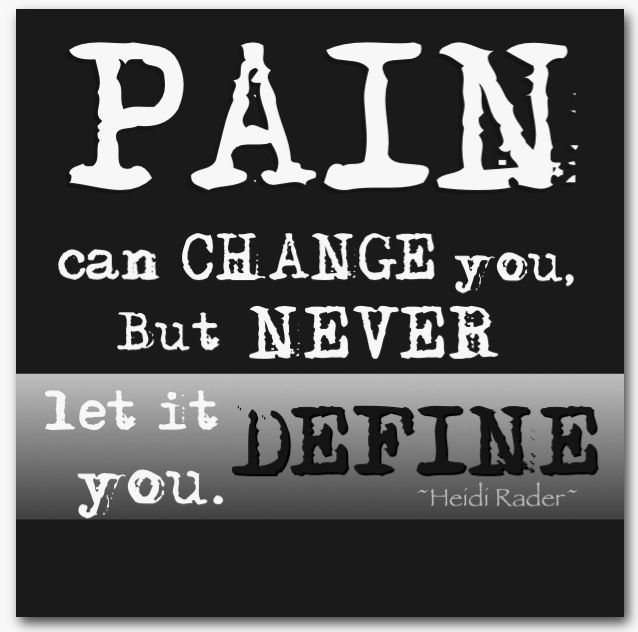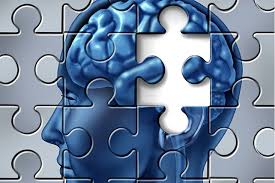As mentioned before understanding pain and the complexity behind it is not easy. The input is the physiotherapists and the output is the patients. I was questioning myself about what qualities should the input hold in order to achieve the maximum output, and how physiotherapists achieve this knowledge? Is there a model that we can follow?

The answer is really complicated. I started this blog as an advice and education for patients with persistent pain. But who will educate us in order to educate the patient? Is it the University? Maybe a course? Or will the answer be found in literature? In my case it is a combination of literature and University. Whatever the case, I am still thinking what about the other physios? What are their perceptions and beliefs about pain? Does this perceptions derived from literature or not? And finally what is the impact on our patient’s treatment? Well I think there was a transformation in my head from the “inflammatory soup” into the more questioning stage! Let’s hope that the final stage will be the answer, understanding and enlightenment stage.
Thoughts regarding the past, present and future evidence
Present
Having a look at today’s evidence, one can find quite good evidence about the effects of Explaining Pain (EP)(Moseley and Butler, 2015)1 and Pain Neuroscience Education (PNE)(Louw et al., 2011)2 on the overall patients’ treatment outcome.
Past
(Overmeer et al., 2011) 3A Randomized Controlled Trial testing if teaching physical therapists to deliver a biopsychosocial treatment program result in better patient outcomes? Well the results were that “Pain and disability outcomes in all patients of physical therapists who had participated in the course or in patients at risk of developing long-term disability who had higher levels of catastrophizing or depression were not significantly different from those outcomes in patients of physical therapists who had not participated in the course. Pain and disability outcomes in patients with a low risk of developing long-term disability—and pain outcomes in patients with a high risk of developing long-term disability—were not dependent upon whether the attitudes and beliefs of their physical therapists changed during the course. However, disability outcomes in patients with a high risk of developing long-term disability may have been influenced by whether the attitudes and beliefs of their physical therapists changed”.
Future
I was wondering what would be the outcomes of a new RCT teaching Physiotherapist a combination of EP/PNE with the 5 steps approach of Jo Nijs?(Nijs et al., 2013)4( have a look below for the 5 steps ) Will the beliefs and perceptions of Physiotherapists change? What will be the overall outcome regarding our patients? Well taking into account the todays evidence I think the outcomes will surprise us!

The reason that I support this is because in my case as mentioned in the first post I was a bit confused regarding chronic pain and how to approach it. My beliefs back then were much different than now. Of course the University is a contributor factor but with the evidence on my side I can now understand and apply better the pain complexity approach.
Most of us –including me- use to use a more biomedical approach to treat our patients suffering chronic pain. As a result we fail to treat them in the most effective way. As the evidence suggest a more biopsychosocial approach can be more effective. Let’s see some steps that as physiotherapists can undertake in order to achieve a holistic approach when treating chronic patients.
A significant and effective approach is the one that Jo.Nijs(Nijs et al., 2013) 4 suggests which includes both Therapist and Patients.
Steps to undertake in order to achieve a maximum output
Step 1. Understand the background and the complexity of chronic pain (have a look in the previous post)
Step 2. Combine Pain Education/Pain Neuroscience Education with the psychosocial approach
Step 3. Apply it to the patients
- Self-reflection→ a clinicians starting point
- Self-assessment by the use of questionnaires(The Pain Attitudes and Beliefs Scale for Physiotherapists (PABS-PT) -self-reported measure that discriminates between a biomedical and a biopsychosocial orientation of therapists with regard to low back pain management,
- In addition advice literature addressing the biopsychosocial nature of chronic musculoskeletal pain ( have a look at references section)
- Assessment of patients attitudes and beliefs with chronic musculoskeletal pain
- Detailed interview of the patient with the use of questionnaires
- You can use Tampa Scale Kinesiophobia(Vlaeyen et al., 1995)5 or the Fear Avoidance Beliefs Questionnaire(Waddell et al., 1993)6
- Illness Perception Questionnaire(Broadbent et al., 2006)7
In addition to these a recent study of Wijma et al.,2016,8 suggests that a clinical biopsychosocial assessment is recommended prior to PE/PNE as an interaction between patient, pain and biopsychosocial manner. The use of Pain – Somatic factors – Cognitive factors –Emotional factors – Behavioral factors – Social factors – Motivation – model (PSCEBSM-model).”This model attempts to clearly establish what the dominant pain mechanism is (predominant nociceptive, neuropathic, or non-neuropathic central sensitization pain), as well as to assess the provoking and perpetuating biopsychosocial factors in patients with chronic pain. Using this approach allows the clinician to specifically classify patients and tailor the plan of care, including PNE, to individual patients ”
Click here to have a look in PSCEBSM-model
- Clinical Reasoning including reconceptualizations and Education
- Therapy
- Therapy should be based on patients’ individual needs and goals.
- Treatment should lead to lead to improve self-efficacy (Milesl et al., 2011)9

The above models and steps suggest a perfect way for physiotherapists’ to understand this complexity and enables them to apply it efficiently. Of course this is something that one cannot learn in the blink of an eye. It takes time and experience…

References
- Moseley, G.L. and Butler, D.S. (2015) ‘Fifteen years of explaining pain: The past, present, and future’, The Journal of Pain, 16(9), pp. 807–813. doi: 10.1016/j.jpain.2015.05.005.
- Louw, A., Diener, I., Butler, D.S. and Puentedura, E.J. (2011) ‘The effect of Neuroscience education on pain, disability, anxiety, and stress in chronic Musculoskeletal pain’, Archives of Physical Medicine and Rehabilitation, 92(12), pp. 2041–2056. doi: 10.1016/j.apmr.2011.07.198.
- Overmeer, T., Boersma, K., Denison, E. and Linton, S.J. (2011) ‘Does teaching physical therapists to deliver a Biopsychosocial treatment program result in better patient outcomes? A Randomized controlled trial’, Physical Therapy, 91(5), pp. 804–819. doi: 10.2522/ptj.20100079.
- Nijs, J., Roussel, N., Paul van Wilgen, C., Köke, A. and Smeets, R. (2013) ‘Thinking beyond muscles and joints: Therapists“ and patients” attitudes and beliefs regarding chronic musculoskeletal pain are key to applying effective treatment’, Manual Therapy, 18(2), pp. 96–102. doi: 10.1016/j.math.2012.11.001.
- Vlaeyen, J.W.S., Kole-Snijders, A.M.J., Boeren, R.G.B. and van Eek, H. (1995) ‘Fear of movement/(re)injury in chronic low back pain and its relation to behavioral performance’, Pain, 62(3), pp. 363–372. doi: 10.1016/0304-3959(94)00279-n.
- Waddell, G., Newton, M., Henderson, I., Somerville, D. and Main, C.J. (1993) ‘A fear-avoidance beliefs questionnaire (FABQ) and the role of fear-avoidance beliefs in chronic low back pain and disability’, Pain, 52(2), pp. 157–168. doi: 10.1016/0304-3959(93)90127-b.
- Broadbent, E., Petrie, K.J., Main, J. and Weinman, J. (2006) ‘The brief illness perception questionnaire’, Journal of Psychosomatic Research, 60(6), pp. 631–637. doi: 10.1016/j.jpsychores.2005.10.020.
- Wijma, A.J., van Wilgen, C.P., Meeus, M. and Nijs, J. (2016) ‘Clinical biopsychosocial physiotherapy assessment of patients with chronic pain: The first step in pain neuroscience education’, Physiotherapy Theory and Practice, 32(5), pp. 368–384. doi: 10.1080/09593985.2016.1194651.
- Milesl, C.L., Pincusl, T., Carnesl, D., Homerl, K.E., Taylorl, S.J.C., Bremnerl, S.A., Rahmanl, A. and Underwoodl, M. (2011) ‘Review: Can we identify how programmes aimed at promoting self-management in musculoskeletal pain work and who benefits? A systematic review of sub-group analysis within RCTs’, European Journal of Pain, 15(8), p. 775.e1–775.e11. doi: 10.1016/j.ejpain.2011.01.016.
References for addressing the biopsychosocial nature of chronic musculoskeletal pain
- Leeuw, M., Goossens, M.E.J.B., Linton, S.J., Crombez, G., Boersma, K. and Vlaeyen, J.W.S. (2006) ‘The fear-avoidance model of Musculoskeletal pain: Current state of scientific evidence’, Journal of Behavioral Medicine, 30(1), pp. 77–94. doi: 10.1007/s10865-006-9085-0.
- Hollander, M. den, de Jong, J.R., Volders, S., Goossens, M.E., Smeets, R.J. and Vlaeyen, J.W. (2010) ‘Fear reduction in patients with chronic pain: A learning theory perspective’, Expert Review of Neurotherapeutics, 10(11), pp. 1733–1745. doi: 10.1586/ern.10.115.
- Hassett, A.L. and Williams, D.A. (2011) ‘Non-pharmacological treatment of chronic widespread musculoskeletal pain’, Best Practice & Research Clinical Rheumatology, 25(2), pp. 299–309. doi: 10.1016/j.berh.2011.01.005.
Pictures
Figure 1 Brain : http://de.123rf.com/photo_17628517_human-head-with-question-mark-symbol.html
Figure 2. Evidence : http://es.123rf.com/photo_17957703_illustration-depicting-cutout-printed-letters-arranged-to-form-the-word-evidence.html
Figure 3 . 5 steps approach : Wijma, A.J., van Wilgen, C.P., Meeus, M. and Nijs, J. (2016) ‘Clinical biopsychosocial physiotherapy assessment of patients with chronic pain: The first step in pain neuroscience education’, Physiotherapy Theory and Practice, 32(5), pp. 368–384. doi: 10.1080/09593985.2016.1194651.
Figure 4:.Knowledge and Experience : http://www.azquotes.com/quote/843832
Physiotherapy Education Perspectives












 pses and impulses! Of course he lost his interest a minute later. But then I thought that my Dad is a house Electrician, so if I try to give him an example relating with houses or panels he might find it easier to follow! And he did actually! So let’s come again to the house alarm example. First you set up the alarm to prevent any burglar from breaking in the house. The burglar enters
pses and impulses! Of course he lost his interest a minute later. But then I thought that my Dad is a house Electrician, so if I try to give him an example relating with houses or panels he might find it easier to follow! And he did actually! So let’s come again to the house alarm example. First you set up the alarm to prevent any burglar from breaking in the house. The burglar enters
